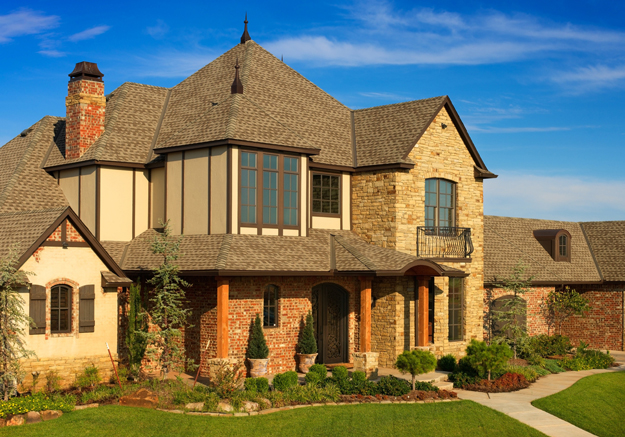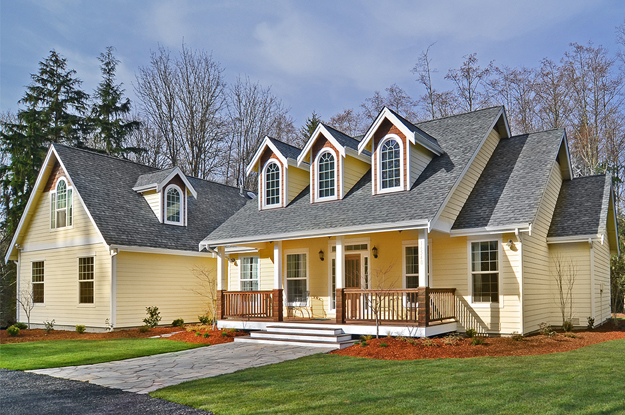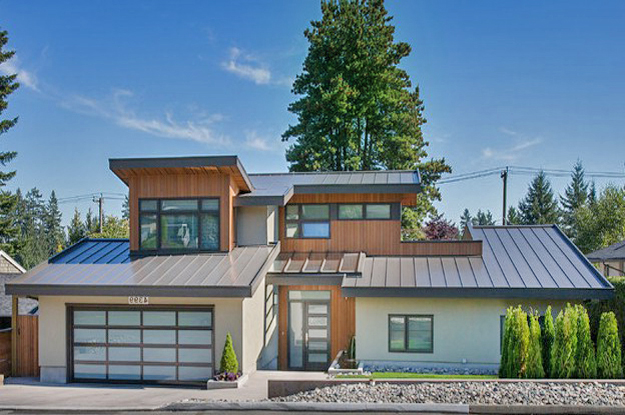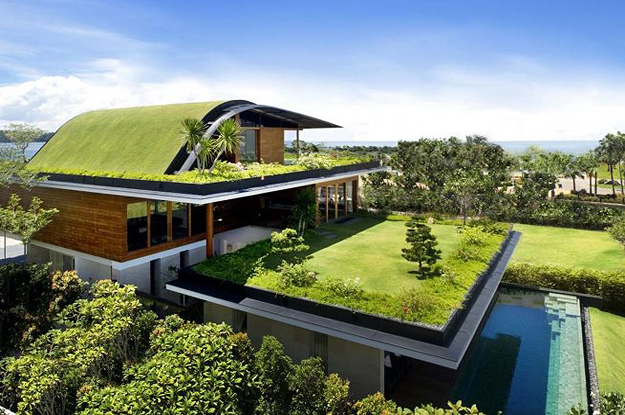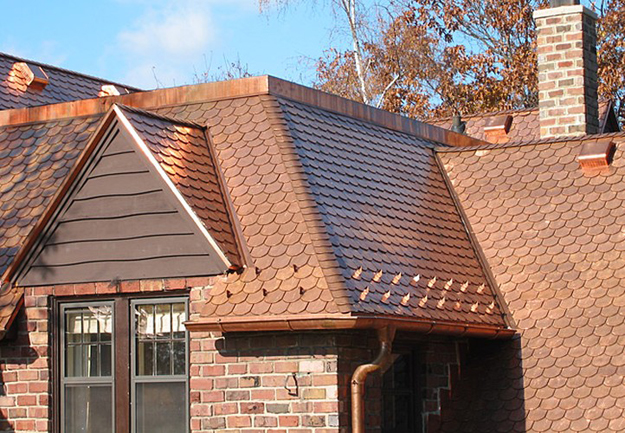Choosing the roof style and which materials to use can be a daunting process. The roofing material you choose can truly enhance the beauty of your home. The type of material, style, color and cost are all major factors in making the best selection. Additionally eco-friendly alternatives, such as those with a high Energy Star rating and materials that can be recycled, are options that you may want to consider when making your decision.
Investing in a new, energy efficient roof can save a great deal of money throughout the life of your home or business by reducing energy consumption and winter heat loss and summer heat gain.
Tried and True Classic Roofing Materials
Get an Old-World Look with Clay Roof Tiles
Authentic clay tile is the historical roof material of choice, dating back to ancient times, and it comes in various soft and rich, earthy colors. It’s a look that pigmented concrete cannot faithfully replicate. Rather than fading with time, clay tiles patinate, blossoming splendidly, and for some architectural styles, clay roofs are the ideal option if you can swing the cost.
Slate Makes for Fireproof Roofs That Last
This high-end material is expensive but long lasting. In fact, slate has been a preferred roofing choice of homeowners for hundreds of years. Any material that stands the test of time like this is one that should be on your radar. Genuine slate is a metamorphic stone most often found in quarries in northeast North America, the United Kingdom and Brazil. As a roofing material, no other product can match its durability, high-end appearance and fireproof qualities. Slate quarried for roofing is a dense, sound rock that's exceptionally tough and substantial.
Asphalt – Affordable and Easy to Install
Let’s just get this out of the way: Asphalt shingles are not exciting. Your friends will not drop their jaws in awe over this material, and if your home were a Broadway production, asphalt shingles would not be the star of the show. But that’s OK. Asphalt shingles do not seek the limelight. They do their job quietly, protecting more homes across the United States than any other type of roof material. Asphalt shingles (alternatively called composition shingles) are a manufactured product consisting of a fiberglass base mat coated in composition asphalt material to provide waterproofing and additional strength. Historically, the base layer was often made of organic material, but over time fiberglass has become the preferred choice for the base.
The Advantages of a Metal Roof
If you are interested in making your house more energy efficient, adding a beautiful and striking major design element, and never having to replace your roof again? Consider a metal roof. While the cost of a metal roof is significantly higher than a shingled roof, it will likely last a lifetime and it is practically maintenance-free. The practical advantages of a metal roof are that it makes your home safer in harsh weather and can significantly cut down on your energy bills. Aesthetically, a metal roof is versatile in design to complement many architectural styles, from a century old farmhouse to a contemporary home.
Concrete tile roofs are the master of disguise
From an architectural standpoint, concrete tile can play many parts. Molded styles are made to mimic natural clay, slate and shake roofs. Concrete roof tiles are as well, which helps make this material one of the most universally popular roof selections around the world. Concrete roof tiles consist of cement, sand, water and pigment. They are mass-produced at regional facilities, where materials are mixed and extruded before being coated, cured and prepared for shipment. Concrete roof tiles are widely used. They have a long life span and are available in various colors and molded shapes — and cost less than clay, shake or slate.
The Natural Beauty of Wooden Roof Shingles and Shakes
Natural Wood is not the popular roof material choice it once was, thanks to the proliferation of asphalt, composition, and concrete roof tiles. But for some there is simply no substitute. Wood can be faked but never perfectly replicated. Like the inhabitants it keeps dry, wood roofs age with the passage of time, turning a silvery gray under the sun. If you live in North America, this is likely the roof material of your childhood home (or at least your parents’), and is the ideal choice for many traditional home styles.
Since a roof must withstand the worst of nature’s onslaughts, only the heartiest of species will suffice. Western red cedar is the most commonly utilized wood for shingles and shakes in North America. California redwood and cypress are also readily available, while pine shingles are offered in some regions. These wood types all have a superior resistance to decay plus other characteristics related to ease of installation and appearance, making them superior wood material options for roofs.
Alternative Roof Materials to Buck the Mainstream
A Green / "Living" Roof
A natural green living roof can become a true landscape, and though arguably more expensive and requiring more maintenance than other alternatives, these rooftop habitats offer fantastic advantages. The lush, natural curb appeal, superb insulation and stormwater management benefits are difficult to match. This is also a roof material type that actually reduces greenhouse gasses. It’s a living habitat on your roof, attracting birds, bees, butterflies and more.
Thatch roofs
This old-world option has drawbacks, such as flammability and lack of mold resistance, but these common criticisms are possibly overstated. Thatch installers say this ancient roof material, when installed correctly, can last 50 years or more, and is more fire-resistant than folks give it credit for. The natural look is undeniably authentic, and the material is renewable and cheap. Thatch roofs are not common in the U.S. for residences, but are more frequently used on ancillary structures, especially in tropical climates.
“Cool” roofs
The truth is, many of the materials covered in this series on roof options can be used to create a “cool” roof, one that reflects or otherwise mitigates heat. Metal roofs, membrane systems, white tile roofs (like the one shown here) and even living roofs can all be described as cool roofs. There are also added coatings available to improve the reflective characteristics of most roof materials. Cool roofs offer superior reflective qualities due to material characteristics or color, reflecting heat from the home structure and thus decreasing heat gain in the home. This lessens the extent of air conditioning required and is undeniably a benefit in hot climates.
Copper
A copper roof is a statement, and it’s one you’ll pay a premium for. Metal roofs themselves are relatively expensive, and copper is the premium roof metal. But there is something grand about copper on a roof, and it’s bright sheen, seen on the rooftop above, will turn a blue-green hue in time. While a copper roof provides excellent longevity, durability and reflective qualities, it is an extremely expensive option that does not have much demonstrative benefit (except appearance) compared to standard metal roofs.
 Facebook
Facebook
 X
X
 Pinterest
Pinterest
 Copy Link
Copy Link

